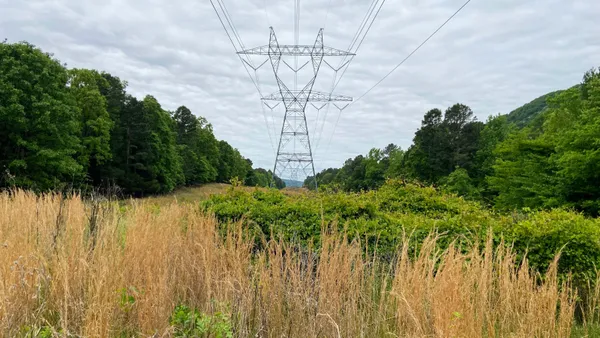Dive Brief:
- Federal regulators have approved the California ISO's proposal to integrate distributed resources into its wholesale market, allowing the grid operator to treat an aggregation, rather than individual source, as a market resource, Power Markets Today reports.
- The new rules will allow aggregations of at least 0.5 MW to participate in CAISO's energy and ancillary services markets as a new type of market participant.
- The Federal Energy Regulatory Commission (FERC) rejected a proposal from Pacific Gas and Electric (PG&E) to impose penalties on distributed resources for failure to respond to dispatch instructions, finding that other demand response resources are not similarly penalized.
Dive Insight:
CAISO has adopted new rules to integrate distributed resources into its markets, but they come with several limitations designed to limit potential disruptions. Generators of 1 MW or more will be unable to participate, and generators between 0.5 MW and 1 MW would also be limited unless they terminate participating generator agreements
FERC said in its order that CAISO will treat the aggregation as the market resource, in order to "accommodate smaller distribution-connected generation and emerging resource types that may need a different model for wholesale market participation."
Aggregations may consist of distributed energy resources (DERs) at one pricing node or may span multiple pricing nodes, though those spanning nodes are limited to 20 MW in size.
CAISO also required each distributed energy resource aggregation to be located in a single sub-load aggregation point to ensure that it does not create additional congestion.
"If an aggregation were allowed to have resources on both sides of a constraint identified by CAISO, a CAISO dispatch instruction to alleviate a constraint between these two subLAPs may actually exacerbate the problem," FERC said. "CAISO states that this same requirement is placed on demand response resource aggregations participating in the CAISO markets (i.e., proxy demand response resources and reliability demand response resources)."
Pacific Gas and Electric (PG&E) had asked FERC to require that the ISO assess penalties for an aggregation that fails to respond to dispatch instructions "in a manner consistent with its generation distribution factors." However, CAISO rejected the idea and FERC agreed that the penalties would be unfair.
"We agree with CAISO that this practice would be unduly discriminatory given that proxy demand response resources, reliability demand response resources, and physical scheduling plants are not penalized in this manner," FERC said in its order. "We also reject as overly burdensome PG&E’s request that CAISO file quarterly compliance filings for three years, documenting its monitoring of the aggregations."
FERC did, however, require the grid operator to conduct market performance reviews of distributed energy resources at least once a year, for a period of three years after the changes take place.















